On the 26th May, I set out on my motorbike, with rucksack full of camera gear precariously balanced on my back, to Merthyr Mawr. My journey, or rather quest, was to search for the Grizzled Skipper. Grizzled Skippers are tiny and rather moth-like butterflies readily identified by their pattern of white chequers on dark wings, with distinctive black-and-white fringes. They emerge around mid April and by mid June have completed their life cycle. There was also the niggling thought that they are a declining species and particularly rare in Wales, with self-contained colonies restricted within the small stronghold of Merthyr Mawr. I therefore felt a sense of urgency, knowing that my chance of finding this illusive little skipper was dwindling with each passing day.
Merthyr Mawr Warren is a unique system of high, undulating sand dunes near Bridgend in South Wales. A limestone cliff has been buried by sand and the short vegetation that grows here provides an ideal habitat for several butterfly species, particularly the Grizzled Skipper. An unusual butterfly site because it is just a huge area of sand dunes. It is one of the largest dune areas in Europe and has fine panoramic views to Porthcawl in the west and Ogmore-by-Sea in the east.
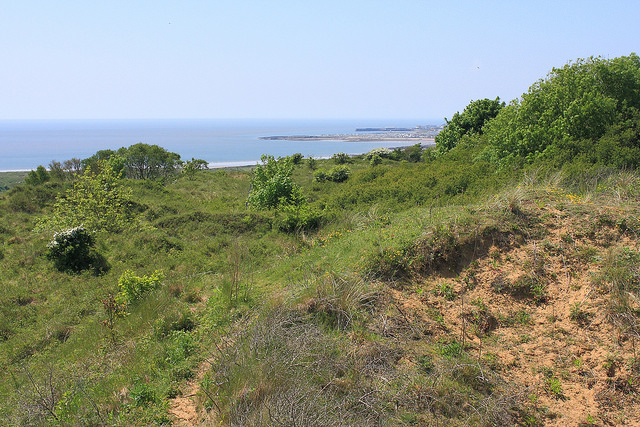
Fine panoramic view of Porthcawl in the distance
South-west of Bridgend, between Porthcawl and the village of Ogmore-bySea, I rode on the A48 Cardiff to Port Talbot road, running parallel to the M4. The turning off to Merthyr Mawr led to a delightful minor road, which like an old river meandered and led to a reserve car park, near the ruins of Candleston Castle. I managed to avoid the parking fee by parking my bike on a nearby clearing along the narrow road. From here the dunes were only a short distance away. These dunes were so extensive that I had to be careful not to get lost. Lots of tracks and various circular routes were possible, although some paths were steep and walking was difficult especially with a rucksack full of camera gear!
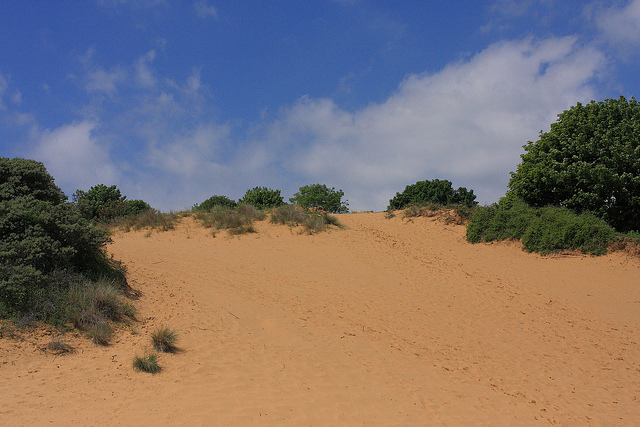
Steep dunes made walking difficult
There were superb sandy beaches and fine views, so Merthyr Mawr was a wonderful place to visit. Miles of open dunes, scrub and all the varied wildlife that goes with this made the visit particularly memorable. As well as butterflies, this is a very good site for bird watching (the important bird reserve at Kenfig being just a short distance away, near Porthcawl). Not far (about 30 miles) is Butterfly Conservation’s Caeau Ffos Fach Reserve, which is very good site for Marsh Fritillaries.
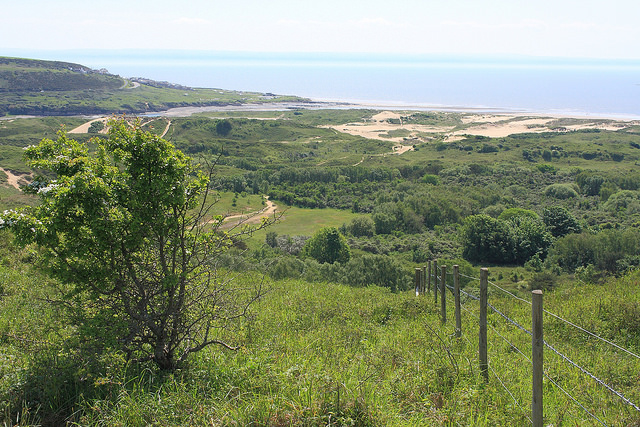
Miles of open dunes, scrub and sandy beaches in the distance
As I climbed the steep sandy paths, through tufted grass, carpeted with Wild Strawberry and dappled with beautiful Wild Pansies and Scarlet Pimpernel, the distinctive red and black form of a Cinnabar moth fluttered past and settled on an oasis of succulent stems. Without haste I quickly fired away some shots knowing that it was far too warm for the Cinnabar to tolerate my presence, let alone give me permission to approach within the breathing distance necessary for macro!

Wild Pansy, Scarlet Pimpernel, and Wild Strawberry
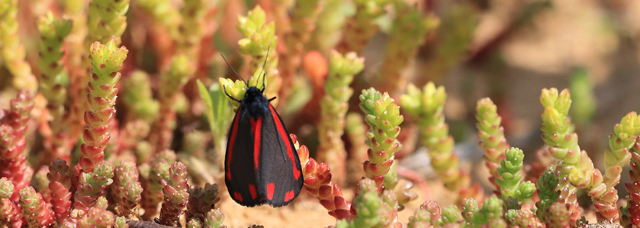
Cinnabar Moth perching on an oasis of succulent plants
Climbing further, I would stop to take my breath and admire the wonderful panoramic views of the coastline, sea and brilliant blue sky that stretched out in front of me. In contrast, looking behind me and nestled within the undulating grass covered dunes lay the ruined Candleston Castle (a 14th century fortified manor house). It was hard work climbing but the beautiful, natural scenery more than compensated for my sweat and breathlessness. Besides, I reminded myself that I was on a quest to see the Grizzled Skipper. With that thought etched in my mind, I merrily plodded on, alert to any grey trace of blurred wings that could conceivably betray its presence.
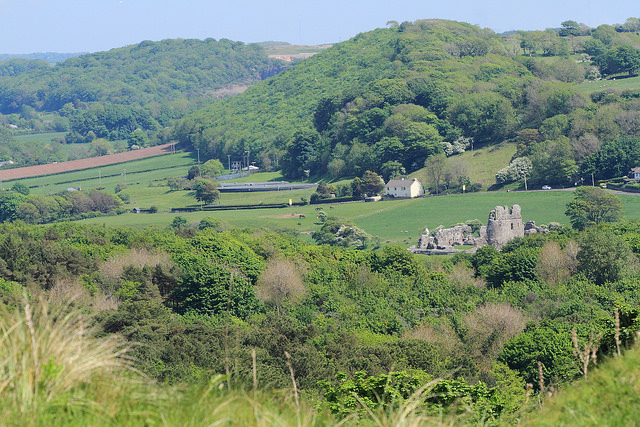
Nestled within the undulating grass covered dunes lay the ruins of Candleston Castle
I found my first Grizzled Skipper fluttering over patches of bare ground where Wild Strawberries grew. At first I thought it was a small moth until it settled and opened its wings. I was amazed at its tiny size, much smaller than I anticipated and definitely smaller than the Dingy Skipper I had photographed at Kenfig Nature Reserve, just a few weeks earlier. It was also considerably darker with an attractive chequered pattern that I remembered as being absent on the plainer Dingy Skipper. This Grizzled Skipper had the dark brown colouration more typical of late May specimens than the blacker more newly-emerged Skippers of April.
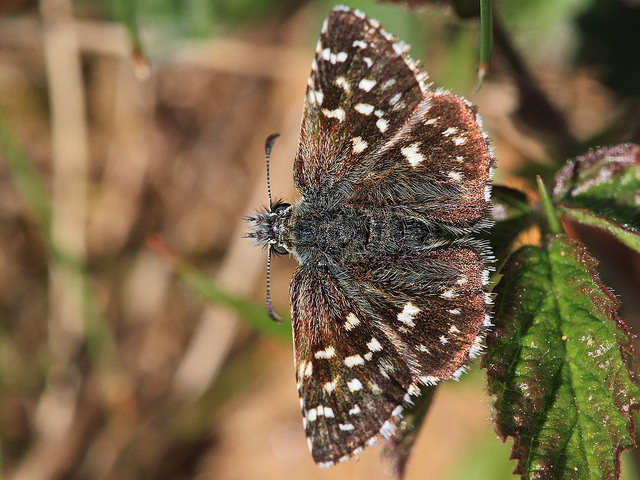
Grizzled Skipper perching on the leaves of Wild Strawberry
Basking in the sun while balancing precariously on a long blade of wild grass, I found the menacing presence of a Robber fly. There were plenty about and I feared that this awesome predator would make a short snack of any Grizzled Skipper foolish enough to come within striking distance. Robber flies are veracious killers that feed by sticking their syringe-like rostrum into their victim, sucking them dry. They can take on prey much bigger than themselves, such as large moths and even dragonflies!
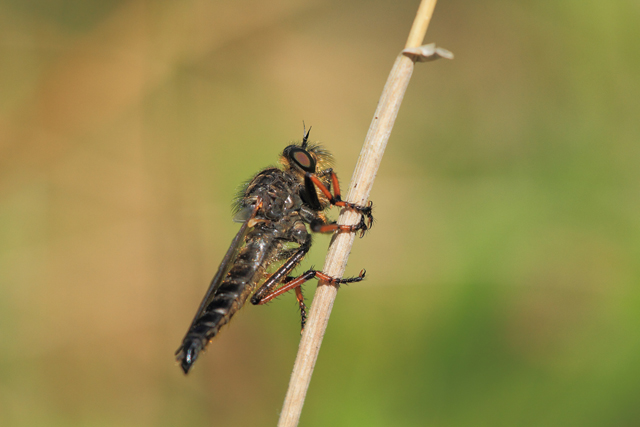
Menacing presence of Robber Fly
As I diligently patrolled an area, my eyes gradually became more acclimatised and I managed to find more Grizzled Skippers. While some hovered motionless above the flowers of Wild Strawberry others darted about in typical, rapid flight manner of the skipper, usually keeping close to the ground. These were accomplished flyers and battles between rival males took the form of spectacular displays of flying skills. Males liked to bask in the sun in favoured plants such as Wild Strawberry, Bramble or Bird’s Foot-Trefoil, before darting off at speed to attack a rival or court a female. They reminded me of my daughters French bulldog as they also had stocky, short and solid bodies while also possessing plucky and endearing characters. ‘The French bulldogs of the butterfly world’, I chuckled to myself.
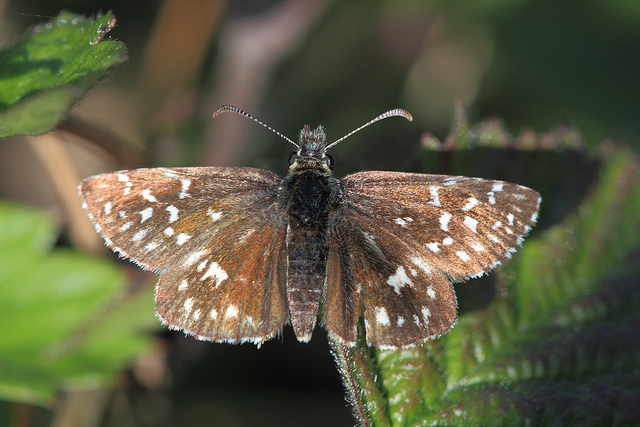
This Grizzled Skipper had the dark brown colouration more typical of late May specimens
My quest for the Grizzled Skipper was now complete and I felt a huge sense of satisfaction. However, knowledge acquired is prone to becoming stagnant and lifeless unless it is replenished through new, living experiences. Having found and photographed the Grizzled Skipper, I now crave to explore and discover more about the secrets of this elusive and endearing butterfly. Like a pilgrim on the road to enlightenment, I’m sure that next year, come April/May, I will be returning to Merthyr Mawr.

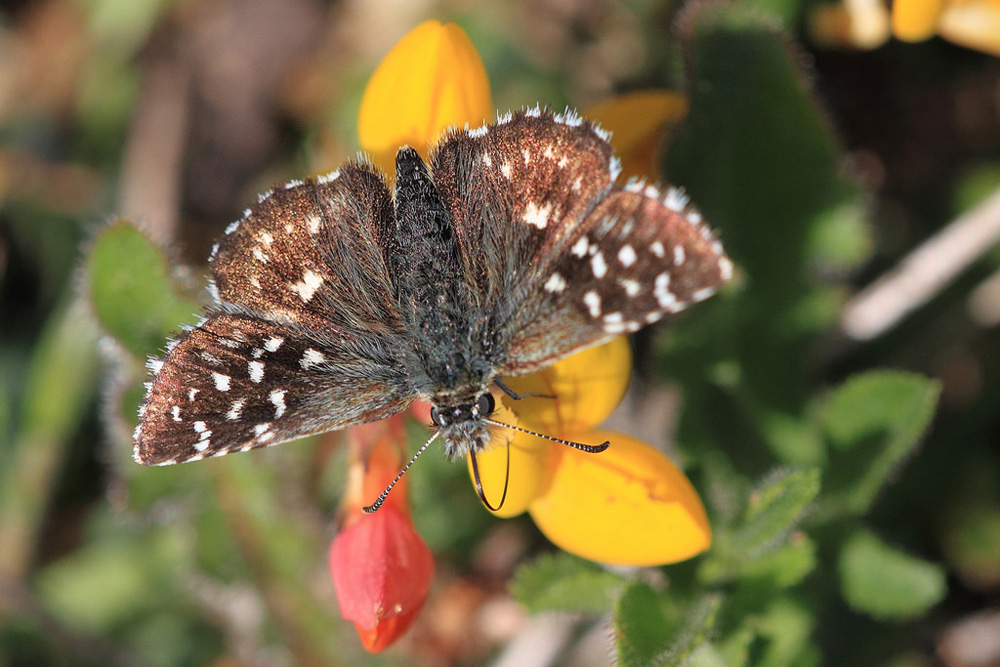
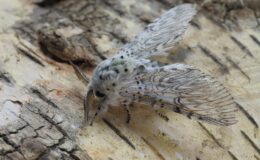
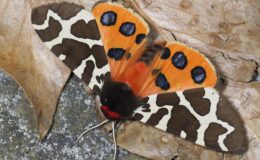

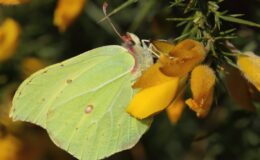
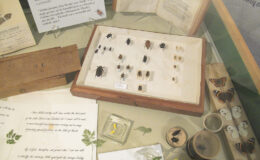
Leave a Comment